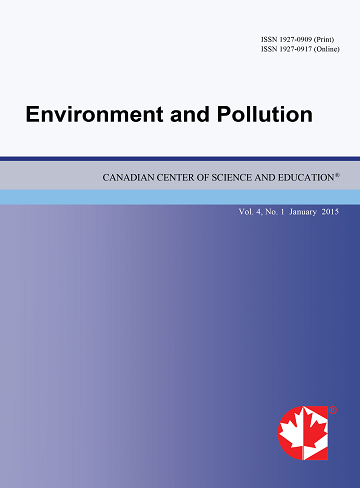Spatial and Seasonal Variation of Dissolved Nitrous Oxide in Wetland Groundwater
- Xing Li
- Changyuan Tang
- Zhiwei Han
- Piao Jingqiu
- Cao Yingjie
- Zhang Chipeng
Abstract
Understanding the spatial and temporal pattern of dissolved nitrous oxide (N2O) in groundwater is essential to estimate the N2O emissions from groundwater to the unsaturated zone and to the atmosphere. In order to study the spatial distribution and seasonal change of dissolved N2O in wetland, a headwater wetland in Ichikawa, Chiba Prefecture, Japan, was chosen. Variations of nitrate (NO3-), dissolved N2O and ?15N-NO3- indicated that the dissolved N2O in the groundwater of study wetland consists of two parts, one from denitrification within the wetland, and another from nitrification at upland. Principal component analysis (PCA) was used to assess the shallow groundwater parameters in the wetland. And t-test was conducted to find statistically significant differences of the variables between the ASW and NS, warm season and cool season. The concentrations of dissolved N2O increased from the upland to the zone of adjacent area between slope and wetland (ASW) and then decreased at the zone near the stream (NS). In sight of dissolved N2O associated nitrogen migration, groundwater in the study area can be divided into three stages: upland as the stage 1, ASW as the stage 2, and NS as the stage 3. Higher temperature results in higher denitrification rate, lower dissolved oxygen (DO) and oxidation-redox potential (ORP), yielding higher concentration of N2O in the warm season. Therefore, the seasonal change of dissolved N2O in study wetland can be mainly interpreted by the variation of temperatures of groundwater.
- Full Text:
 PDF
PDF
- DOI:10.5539/ep.v3n1p21
Journal Metrics
h-index (2017): 10
i10-index (2017): 11
h5-index (2017): 9
h5-median (2017): 15
Index
- Academic Journals Database
- Berkeley Library
- CAB Abstracts
- CAS (American Chemical Society)
- CNKI Scholar
- COPAC
- CrossRef
- DTU Library
- Elektronische Zeitschriftenbibliothek (EZB)
- EuroPub Database
- Excellence in Research for Australia (ERA)
- Genamics JournalSeek
- Google Scholar
- Harvard Library
- Infotrieve
- Jisc Library Hub Discover
- JournalGuide
- JournalTOCs
- LOCKSS
- Max Planck Institutes
- Mir@bel
- PKP Open Archives Harvester
- Pollution Abstracts
- Publons
- Pubmed journal list
- ROAD
- Scilit
- SHERPA/RoMEO
- Standard Periodical Directory
- Stanford Libraries
- UCR Library
- Ulrich's
- UniCat
- Universe Digital Library
- UoS Library
- WorldCat
- Zeitschriften Daten Bank (ZDB)
Contact
- Albert JohnEditorial Assistant
- ep@ccsenet.org
